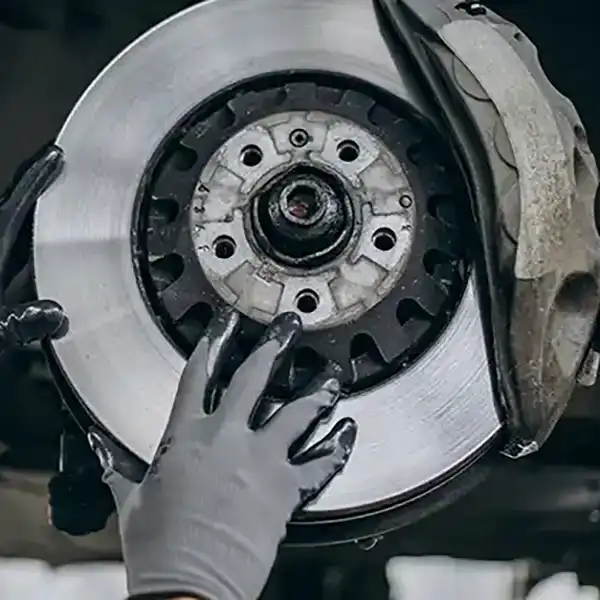Decoding Brake Discs: Types, Materials, and Maintenance Tips
If your car’s brake system were a superhero, the brake discs would be its unsung sidekick. These essential components come in various types and materials, each playing a unique role in your vehicle’s braking performance.
Types of Brake Discs: Unveiling the Lineup
Imagine a superhero with different suits for various missions—that’s your brake system. Vented, drilled, and slotted brake discs are the crime-fighting trio. Vented discs allow heat to dissipate, drilled discs enhance cooling, and slotted ones wipe away debris for a cleaner brake surface.
Materials Matter: The Alloy Arsenal
Your brake discs are like the Captain America shield of your car, and the choice of material matters. From traditional cast iron to high-performance carbon-ceramic, each material brings its own strengths. Cast iron for durability, composite for reduced weight, and carbon-ceramic for supreme heat resistance.
Maintenance Tango: Dancing with Your Brake Discs
Maintaining brake discs is like giving them a spa day. Regular inspections, cleaning, and occasional resurfacing keep them in top-notch condition. Remember, a happy brake disc means a safer and smoother ride for you and your four-wheeled friend.

Pad Powerplay: Choosing the Right Brake Pads for Your Vehicle
When it comes to braking, the real stars of the show are the brake pads. Choosing the right ones is like picking the perfect sidekick—essential for a smooth and drama-free ride.
Pad Personality: Matching Pads to Your Driving Style
Are you a city cruiser or a highway speedster? Brake pads come in three main types: organic, semi-metallic, and ceramic. Organic for everyday driving, semi-metallic for heavy-duty use, and ceramic for a quiet, low-dust performance. Find the pad that vibes with your driving style.
Temperature Talks: How Heat Affects Brake Pads
Brake pads are like hot chocolate—they have a melting point. Understanding the temperature range of your brake pads is crucial. Too hot, and they lose effectiveness; too cold, and they might not grip well. It’s a delicate balance that keeps your braking system sipping hot cocoa, so to speak.
DIY Pad Pop Quiz: When to Swap and Stop
Doing a quick pad check is as easy as pie. Listen for squeaks, feel for vibrations, or, if you’re feeling adventurous, take a peek through your wheel spokes. If your pads are thinner than a pancake, it’s time to swap them out. Remember, a happy pad means a happy brake system.

Behind the Scenes of Braking: Exploring Calipers and Hydraulic Systems
Ever wondered what’s behind the curtain of your car’s braking performance? Enter calipers and hydraulic systems—the dynamic duo working tirelessly to ensure your safety on the road.
Caliper Chronicles: The Grip Masters
Calipers are the biceps of your braking system, responsible for squeezing the brake pads against the discs. They come in two varieties: floating and fixed. Like an embrace, calipers provide the essential hug to slow down your spinning wheels.
Hydraulic Harmony: The Force Behind the Brake Pedal
Ever played with water pistols? Your brake system works on a similar principle but with hydraulic fluid instead of water. When you press the brake pedal, it sends a signal to the calipers through hydraulic fluid, making them clamp down on the brake discs. Teamwork makes the dream work!
Fluid Friendship: The Importance of Brake Fluid Checks
Imagine your brake fluid as the lifeblood of your braking system. Regular checks and changes are vital to prevent brake fade and maintain optimal performance. A happy hydraulic system ensures a responsive brake pedal and smooth stops every time.

Do It Yourself Brake Inspection: Easy Ways to Make Sure You’re Safe on the Road
Being your car’s best friend means taking charge of its well-being. DIY brake checks are like giving your vehicle a health check-up – simple, effective, and crucial for your safety on the road.
Visual Inspection Waltz: Eyes on the Brakes
Start with a visual inspection. Peek through the wheels and check for any visible issues – like brake pad thickness, fluid leaks, or uneven wear on the discs. It’s a dance that takes only a few minutes but can save you from a brake-related drama.
Listen to the Rhythm: Brake Sounds Decoded
Your car speaks to you through sounds, and listening to its rhythm can prevent brake troubles. Squeaks, squeals, or grinding noises are like Morse code, signaling potential issues. If your car is singing a brake-related tune, it’s time for a check-up.
Pedal Feel Foxtrot: Smooth Moves
The brake pedal is your dance floor – it should move smoothly and consistently. If it feels spongy, too firm, or inconsistent, there might be an issue with your brake system. Trust your foot – if it feels offbeat, it’s time to bring your car in for a check.


